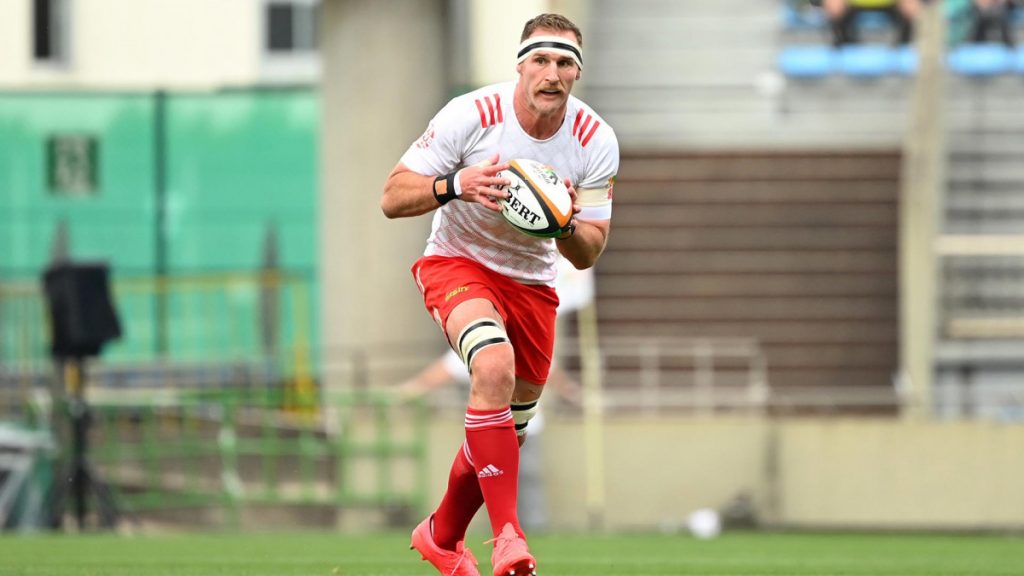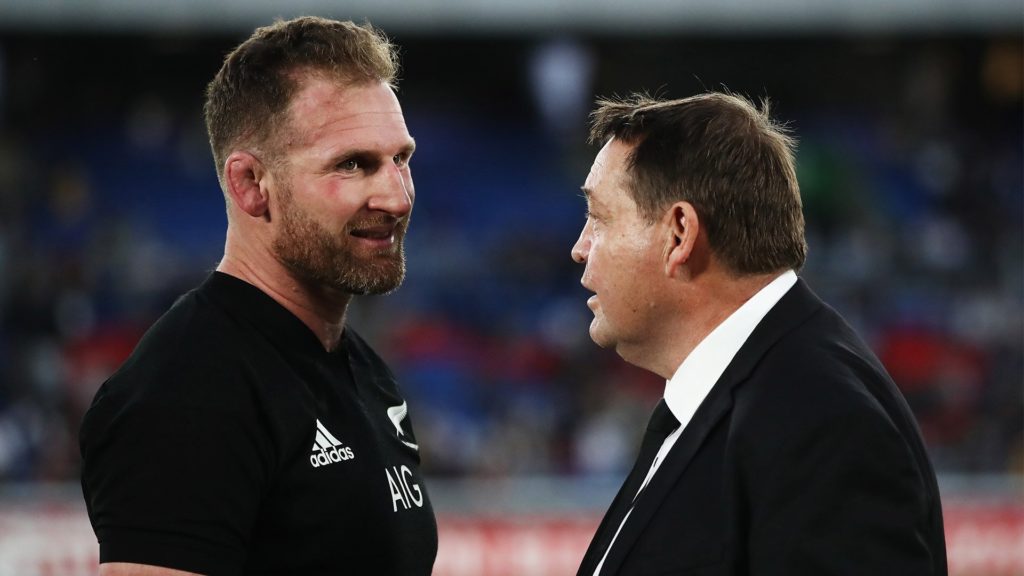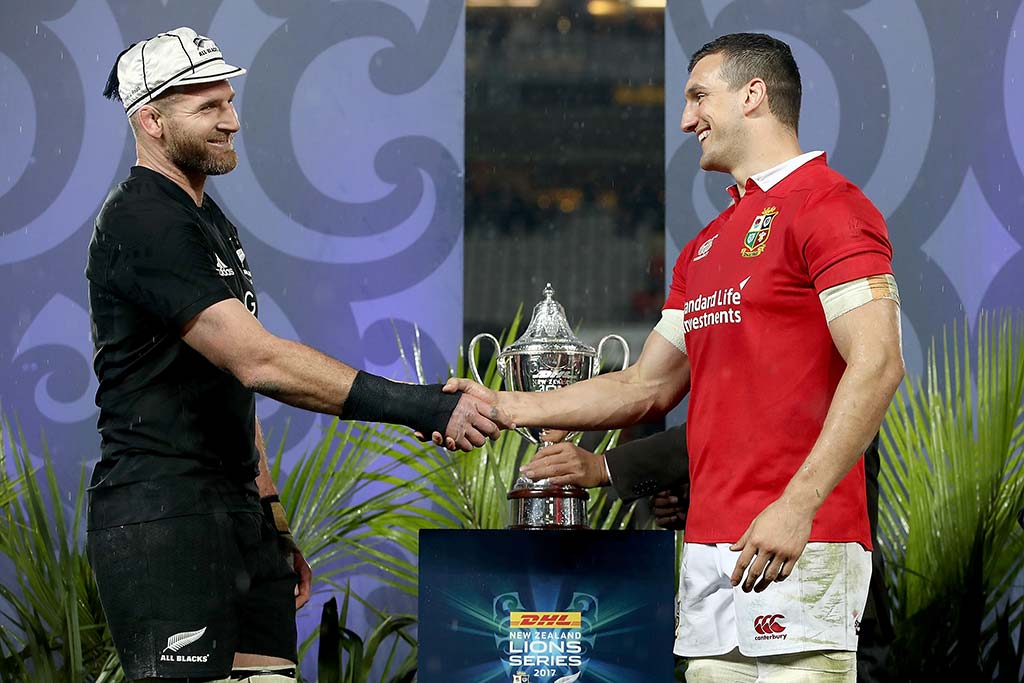There was a precise moment in time when it became clear Kieran Read was destined for greatness.
It was at Eden Park against the Springboks in 2010, 18 months after he had made his debut at Murrayfield, when it became apparent there was something incontrovertible at the soul of Read – a mix of drive, ambition, talent and a ferocious ability to endure.
For the sake of posterity, the date was July 10. It’s a date worth remembering now that Read has retired from all rugby. A date by which we can all measure a stunning career which came to a close last week when Read finished his contract with Toyota Verblitz in Japan.
All Blacks who eke out a couple of extra seasons of offshore club football after they have quit the international scene never quite get the farewell they deserve when they actually call it quits.
The goodbyes were all said and the best bits all remembered when the test jersey was taken off for the last time.

But Read, having won two World Cups and captained the All Blacks 52 times, is one of New Zealand’s greatest players and so the fact he’s now put the boots away forever seems like an opportune time to actually put his career into context, or at least acknowledge what was at the very essence of his excellence.
His is a career that just needed a half chance to take off and surpass all expectations.
His ability had been obvious since 2007 when he came into a Crusaders side that had been forced to rest their big-name loose forwards as part of the World Cup preparations, and play well enough to leave many wondering whether he would be getting on the plane to France later that year as well.
He wasn’t ready in 2007, but by the following year, there was no doubt he was, having been the best loose forward in the country during Super Rugby in 2008. He was easily the most influential back-rower in the Crusaders’ title-winning run, but when it came to All Blacks selection for the June tests, Read wasn’t picked.
He was the shock omission – the man every armchair selector had in their squad. “It’s Kieran’s first big Super 14 season and I think that takes its toll and I think he needs to re-group and set his sights on the end-of-year tour,” head coach Graham Henry.
In the 12 months after first appearing for the All Blacks in Edinburgh, Read redefined himself from talented, promising utility back-rower to specialist, potentially world-class No 8.
“I think that will be helpful for him and he’ll play better rugby for doing that.” Henry was at pains to stress it wasn’t form, but fear of fatigue that led to the selectors overlooking Read until later in the year.
Henry was worried Read would be broken by too much rugby, too soon. That he wouldn’t be able to cope with either the physical or mental demands of a long, hard Super Rugby campaign in which he played almost every game, leading straight into a June test series and Tri-Nations.
Henry was true to his word and did indeed select Read for the end of year tour, where he started at blindside against Scotland and came off the bench in two others.
In the 12 months after first appearing for the All Blacks in Edinburgh, Read redefined himself from talented, promising utility back-rower to specialist, potentially world-class No 8.
He partly had Steve Hansen to thank for that, for it was the then assistant All Blacks coach who sat Read down at the start of 2009 and persuaded him to focus on No 8, telling him that if he did, he could become one of the greatest in All Blacks history.

Hansen wasn’t prone to making casual declarations of immortality like this, hence his comment stuck with Read, who was beginning to feel a greater affinity with No 8 than he was blindside.
The role came with a greater range of demands – the opportunity to play that bit wider and use his soft hands that had been developed on the cricket field and occasionally open into a gallop. The role came with equal opportunity to hurt ball carriers with his destructive tackling.
He’d also seen how All Blacks team-mate Jerome Kaino, after flitting between No 6 and No 8, was starting to establish himself in the former.
As he peered into the 2009 season, Read could see it was the veteran Hurricane Rodney So’oialo who stood between him and the No 8 jersey with the All Blacks.
Read, like everyone else, could see that one day he would surpass So’oialo and take that No 8 shirt. Read was 22, So’oialo 29 and throughout 2008 had been at the peak of his considerable craft.
By November, it was all over. Read was the undeniable, first choice at No 8 for the All Blacks. The potential Hansen had alluded to was apparent when the All Blacks played France in their last game of that year.
If Read had been asked in early 2009 when he thought might usurp the older man, he’d probably have guessed not before the 2011 World Cup.
But his uncertainty faded throughout 2009 for two specific reasons. The first was that So’oialo’s form spectacularly collapsed. Rarely has any All Black fallen so far so fast.
One year he was indispensable, playing brilliantly, then the next, he was barely holding his place at the Hurricanes. It was as if the physical toll of so much hard and demanding rugby hit So’oialo like a tidal wave in 2009 and he just didn’t have anything left in the engine.
He gallantly hung on, the selectors giving him plenty of time to rekindle his fire, but it never quite lit.
By November, it was all over. Read was the undeniable, first choice at No 8 for the All Blacks. The potential Hansen had alluded to was apparent when the All Blacks played France in their last game of that year.

It had been labelled a season-defining contest by Henry after his All Blacks had recovered from four defeats earlier in the year to salvage some pride and respectability with a consecutive run of five wins. A sixth win against a dangerous and confident French team would leave everyone feeling that the All Blacks were suddenly back on track and so it was, they played with breath-taking width, speed, precision and physicality and Read was at the heart of everything.
And that’s what changed in 2009 – the All Blacks selectors saw a great athlete prove he was also a great player by fronting each week and delivering in the most demanding circumstances.
The All Blacks were beaten three times by a physical Springboks team that year and Read was one of the only pack members to come out of those games with any dignity. He just kept going all year – running at or over whatever came into his path.
The selectors will say they got it right being so patient with Read in 2008, but arguably they under-estimated his resilience, toughness and durability. They could have let him loose earlier in 2008 because he was a phenomenally robust animal who lived for the crunch and grind of it all and prided himself on his ability to guts it out.
There was no doubt about that by the middle of 2010, when, in a further sign of his mindset and ability, he destroyed the vaunted Pierre Spies in the first two Tri Nations tests of 2010.
Read was raw-boned, relentless and impactful. He made his presence felt in every collision whereas Spies, big and strong, went missing until there was open space for him to run into.
Spies was winning accolades as the best No 8 in the world and yet at Eden Park, Read ran over the top of him twice and nailed him with multiple big hits. There was no doubt at the end of that contest who the better – tougher – player was.
That was the most obvious difference between the two: Read was raw-boned, relentless and impactful. He made his presence felt in every collision whereas Spies, big and strong, went missing until there was open space for him to run into.
Toughness – that was what marked Read out as a brilliant All Black. He had the toughness to make it to the 2011 World Cup by getting through radical treatment which saw him agree to have his blood injected into his ankle.
He was brave enough to make it through a horrible battle with concussion in 2014 and tough enough to stay on the field during the 2015 World Cup final after badly damaging ligaments in the first few minutes.
Coming into the 2017 Lions series, he hadn’t played for seven weeks because of a broken thumb and yet he finished the first test as man of the match.

He dug deep into himself and found the aerobic capacity to stay in the fight. Tough. Just as he found a way to battle back after major back surgery in early 2018.
Read had bad nerve damage as a result of a bulging disc in his back. The doctors said it would take him 18 months to recover and yet there he was captaining the All Blacks seven months after he came out of theatre.
That he found a way to keep going in his early 30s after such major surgery was just one more piece of evidence that Read has to be considered one of the most durable and resilient All Blacks of any age.
“The only No 8 you could compare him with from the modern game would probably be Zinny [Zinzan Brooke], I think,” Hansen said last week when Read announced his retirement from all rugby.
“Reado was a great defender, a ball runner, a passer. The last couple of years, his back limited him with his running out wide, but prior to that when he was carrying he was just unstoppable.
“He wasn’t just an All Black – he was a great All Black. I think all the great All Blacks have a threshold for pain, they have to play sometimes when they are sore.
“I don’t think people will understand how crippling the back injury was, and we had to nurse that to get him through to the end of his career.
“But he moulded it [his style of playing] and changed things a little bit and used himself a little bit differently and was still able to be a massive contributor.”



Comments
Join free and tell us what you really think!
Sign up for free